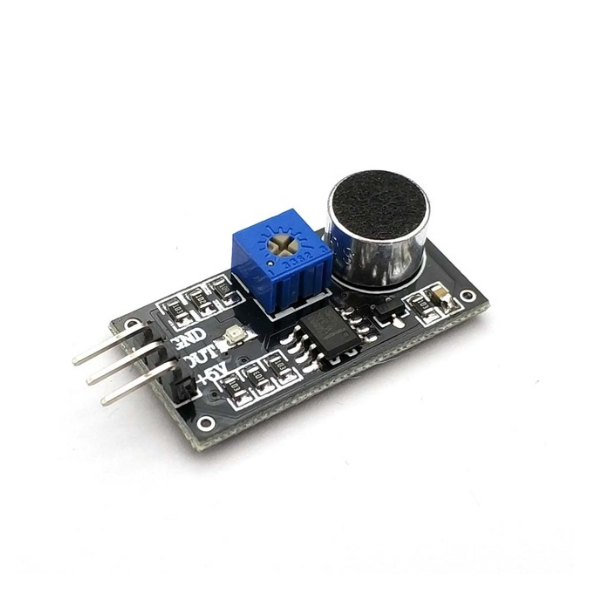Sound Detection Sensor Module: A Comprehensive Overview
Description:
A Sound Detection Sensor Module is an electronic device designed to detect the presence and intensity of sound waves. It typically consists of a microphone, an amplifier, and a comparator circuit. The microphone captures sound waves and converts them into electrical signals. The amplifier boosts the strength of these signals, and the comparator circuit determines if the sound level exceeds a pre-defined threshold.
Key Features:
- Sound Detection: Detects the presence of sound.
- Sensitivity Adjustment: Allows for customization of sound sensitivity.
- Digital Output: Provides a clear digital signal (typically HIGH or LOW) indicating the presence of sound above the threshold.
- Compact Size: Easy to integrate into various projects.
- Low Power Consumption: Suitable for battery-powered applications.
- Versatility: Applicable in a wide range of applications.
Specifications:
- Operating Voltage: Typically 3.3V to 5V DC
- Supply Current: Low current consumption
- Output Signal: Digital (HIGH/LOW)
- Sensitivity: Adjustable via potentiometer
- Dimensions: Small and compact
- Interface: Compatible with microcontrollers like Arduino, Raspberry Pi, etc.
DATA SHEET AND USECASE
Specifications of sound detection sensor module:
- Working voltage: DC 3.3-5V
- Adjustable Sensitivity
- Dimensions: 32 x 17 mm
- Signal output indication
- Single channel signal output
- With the retaining bolt hole, convenient installation
- Outputs low level and the signal light when there is sound
- Output in the form of digital switching outputs (0 and 1 high and low)








